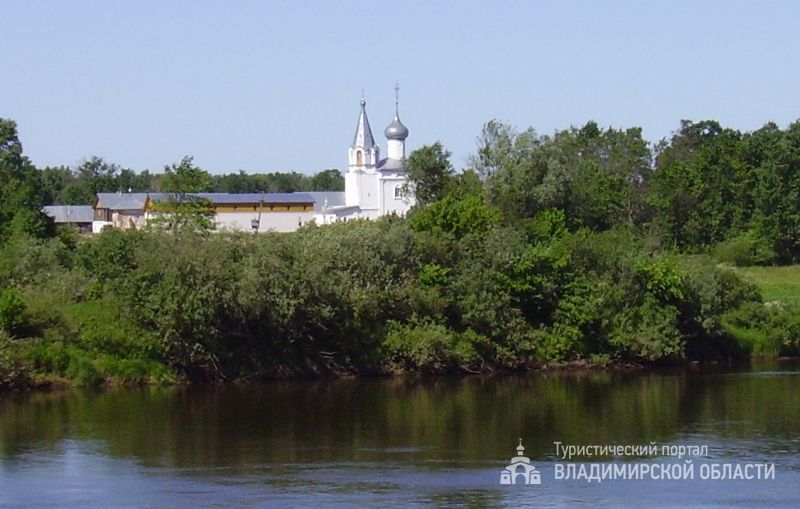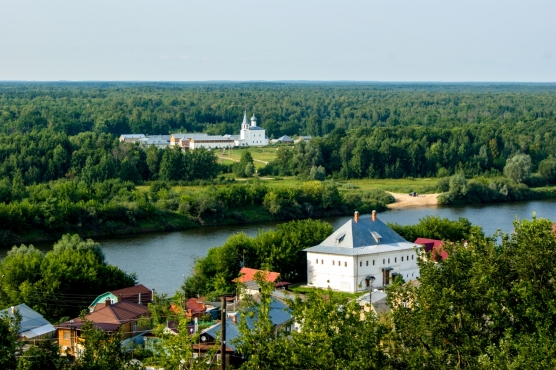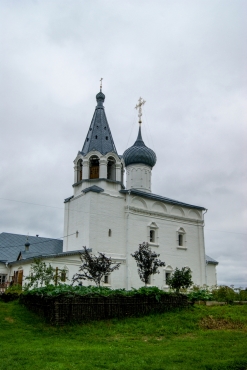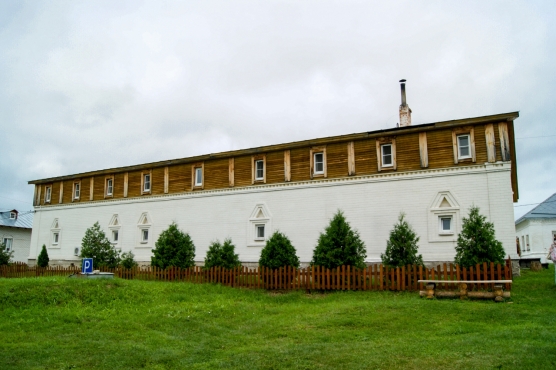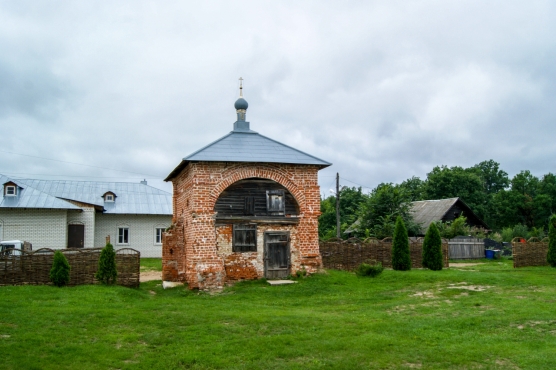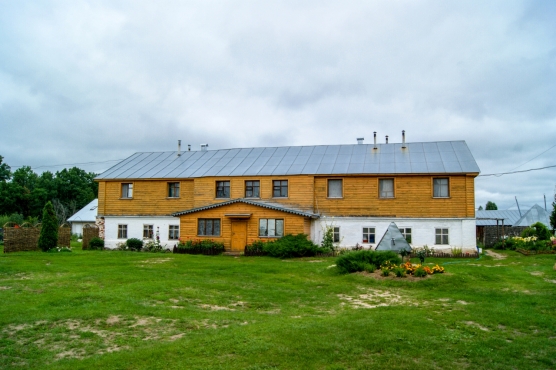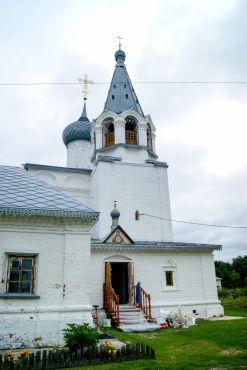Sign of the Theotokos (Znamensky) Monastery
- Address:
- Gorokhovets, the Znamenka site beyond Klyazma (on the left bank)
- GPS:
- 56.21188787, 42.67572984
The Sign of the Theotokos (Znamensky) convent is located on the left, opposite the town, bank of Klyazma. This is the oldest monastery in Gorokhovets, founded in 1598 as a man's abode. The original wooden structures were made on the donations of Peter Lopukhin, a merchant from Gorokhovets. In 1679 Semyon Ershov allocated funds for the construction of the Sign of the Theotokos Church with the chapel and the bell-tower – the first stone buildings in Gorokhovets.
Features that later developed and distinguished Gorokhovets' architecture have already been defined in the Sign of the Theotokos (Znamensky) temple: a cubic church in form; three-part apses, reaching the middle of the quadrangle; rows of decorative kokoshniks under the cornice, resting on the ornamental belt; large windows of the two-lighted quadrangle and the apses, decorated with figured platbands in the form of columns and triangular completions. From the north to the church adjoined the chapel of John the Theologian with the refectory.
Attached to the church later, about 1753, a tented bell-tower, an octagon on a quadrangle, with a low square of the first tier, also carried the already developed Gorokhovets architectural handwriting.
The "golden age" of the Sign of the Theotokos (Znamensky) monastery is often associated with the name of Semyon Ershov, its benefactor. As evidenced by the monastic inventory of 1723, the monastery owned mowing and peasants on his contributions. Also he laid here the monastic traditions of wild-honey farming.
However, the autonomous life of the monastery did not last long. On July 26, 1723, Peter I issued a decree according to which the Gorokhovets Sign of the Theotokos (Znamensky) Monastery, which covers less than thirty monks, was deprived of independence and became a courtyard of a larger monastery – the Holy Assumption Florischeva hermitage, that is on the Nizhny Novgorod land.
By the end of the 18th century, ensemble of the Sign of the Theotokos Monastery has practically acquired a modern look. No monumental buildings any more were built there.
In the Soviet period, the monastery came to complete desolation. In 1923 the Sign of the Theotokos courtyard was liquidated simultaneously with the Florishcheva hermitage. In the 1920's, there was a paper mill in the temple, as well as a warehouse of straw. The greatest destruction in the monastery occurred in the 1960s, when the territory of the monastery housed the departments of state farms that adapted temple buildings for a creamery, a barnyard and warehouses. In the same years the stone fence of the monastery was completely destroyed.
In 1983, shooting of the battle scenes of the epic "The Battle for Moscow" by Yury Ozerov took place on the territory of the monastery and in the temple itself.
The revival of the Sign of the Theotokos monastery began in 1994, when the cloister was returned to the Vladimir-Suzdal Diocese. It was given to St. Nicholas Monastery as a priory and restored by the forces of its brothers. In 1999, the monastery was transformed into the Sign of the Theotokos (Znamensky) female diocesan monastery and regained its independence.
At present, all the buildings of the monastery have been completely restored. The monastery today is attractive for tourists, although it is very secluded, beyond the river, and connects to the city only by a pontoon bridge. And beyond the monastery, the vast expanses of forests begin.
 Tourism portal of the
Tourism portal of the